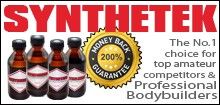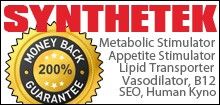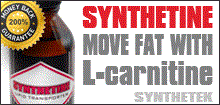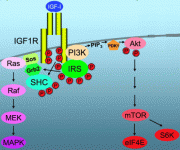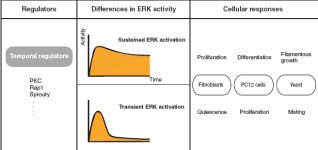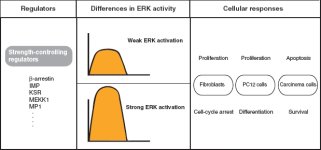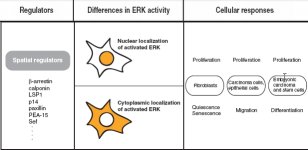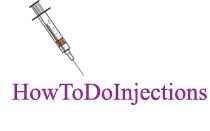I am not going to directly address T3.
The approach many people have is that they take a survey across the boards and then ask me the same question and always preface it by "a lot of people say" or follow up by saying "that is not what I heard."
I don't mean to be a dick but I won't participate in penis or genitalia surveys.
Instead I'm going to explain to you why your use of Metformin with CJC-1295/GHRP-6 produced less than stellar results. From this explanation hopefully you'll understand that the proper answer to the types of questions you raise are far deeper then the gaggle of penises you survey would ever believe possible. Knowledge resides deeper then surface level...so lets take a look.
By now everyone should understand how we end up with more IGF-1 as a result of administering GHRH (CJC-1295, modified GRF(1-29) & Sermorelin) and a Ghrelin mimetic (GHRP-6, GHRP-2, Hexarelin, Ipamorelin & the nonmpeptide molecules) but I'll quickly recap.
Growth hormone (GH) is produced in the anterior pituitary, and is modulated by two hypothalamic hormones, growth hormone-releasing hormone (GHRH), which stimulates both the synthesis and secretion of GH; and somatostatin (SS), which inhibits GH release in response to GHRH.
GHRPs further modulate GH release by acting at both the hypothalamus and the anterior pituitary to enhance both the release and effect of GHRH and inhibit both the release and effect of somatostatin.
Administering GHRH (in the form of CJC-1295, modified GRF(1-29) or Sermorelin) together with a Ghrelin-mimetic (GHRP-6, GHRP-2, Hexarelin, Ipamorelin & the nonmpeptide molecules) both creates and amplifies a GH pulse in synergistic fashion.
GH is naturally secreted in pulsatile bursts from the anterior pituitary gland, a pattern that is necessary to achieve full biological activity. Basal concentrations (between pulses) of GH in blood are very low. GH also feeds back to inhibit GHRH secretion and probably has a direct inhibitory effect on secretion from the somatotroph (GH-producing cells).
GH binds with high affinity to its receptor, found in tissues throughout the body, and activation of this receptor stimulates the synthesis and secretion of insulin-like growth factor 1 (IGF-1). Although 90% of circulating IGF-1 is synthesized and secreted by the liver, many types of cells, including some found in the brain, muscle and vasculature, are capable of IGF-1 production.
Binding of the hormone IGF-1 to the IGF-1 receptor (IGFR) causes potent mitogenic effects, including increases in DNA, RNA and protein synthesis.
IGF-1 binding activates the IGF-1 receptor (IGFR), a receptor tyrosine kinase (which in essence means subsequent pathway activation will be by phosphorylation symbolized below by red
p). The IGFR subsequently recruits the insulin receptor substrate (IRS-1), which results in the activation of two signaling pathways: the
Ras–Raf– MEK–ERK pathway and the
PI3K–Akt pathway. The
Ras–Raf–MEK–ERK pathway is crucial in mitosis-competent cells for cell proliferation and cell survival. However, in adult skeletal muscle, the function of the
Ras–Raf–MEK–ERK pathway is less clear.
The
PI3K–Akt pathway has been shown to be both necessary and sufficient to induce skeletal muscle hypertrophy.
Moving down that pathway it has been demonstrated that
Akt1 activity is
required for IGF-1- mediated hypertrophy, and expression of activated Akt1 is sufficient to induce muscle hypertrophy.
Moving further down the pathway we find
mTOR has been shown to have an important and central function in integrating a variety of growth signals, from simple nutritional stimulation to activation by protein growth factors, resulting in protein synthesis.
Akt phosphorylates (or activates)
mTOR and both
Akt phosphorylation and
mTOR phosphorylation are
increased during muscle hypertrophy.
Metformin
Metformin chronically activates AMP-activated kinase (AMPK). AMPK slows liver glucose output by down-regulating expression of glucose-6-phosphatase and phosphoenolpyruvate carboxykinase; in skeletal muscle, it boosts the efficiency of insulin-stimulated glucose uptake by increasing expression of GLUT-4. These effects mandate a down-regulation of insulin secretion.
The resulting reduction of liver insulin activity will suppress liver production of IGF-I while boosting that of IGFBP-1, thereby
decreasing plasma free IGF-I.
Stimulation of AMPK with Metformin also interferes with the
Ras–Raf–MEK–ERK pathway of IGF-I signaling by
inhibiting the ability of IGF-I to activate ras and its downstream targets.
Stimulation of AMPK with Metformin also
blocks the ability of the PI3K-Akt pathway to activate mTOR.
Since the
Ras–Raf–MEK–ERK cascade, as well as
mTOR and its downstream targets, are key mediators of IGF-I’s ability to increase hypertrophy a systemic increase in AMPK activity as brought about by Metformin will hinder the potential for hypertrophy not only by diminishing plasma levels of insulin and free IGF-I, but also by intervening in the post-receptor intracellular pathways mediated events which bring about these bodybuilding effects.

